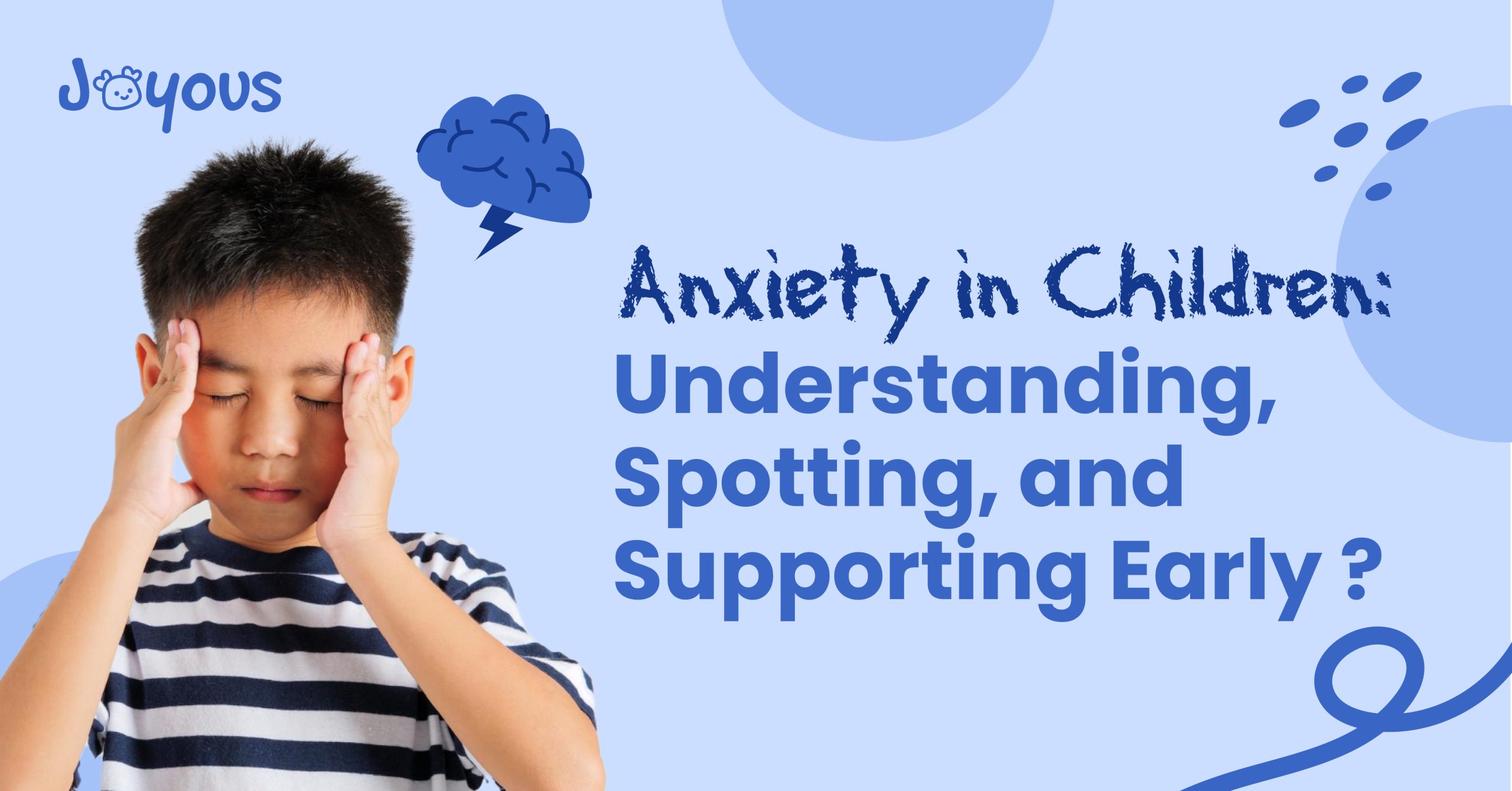Anxiety isn’t always a bad thing. It’s our body’s built-in alarm system — the thing that tells us to be careful when crossing the road or speaking in front of a crowd.
But for some children, this “alarm” rings too loudly, too often, and for too long. When that happens, anxiety can interfere with learning, playing, and even everyday routines. Research shows that up to 7% of children worldwide experience an anxiety disorder at any given time (World Health Organization, 2023).
What Anxiety Really Is
At its core, anxiety is a natural stress response.
For children, it can be triggered by anything from starting preschool to meeting new people. In small doses, it helps them prepare, adapt, and stay alert. But when the worry feels overwhelming, persistent, and out of proportion, it may be more than just “nerves.”
The American Psychological Association (APA) notes that childhood anxiety, when left untreated, can contribute to difficulties in school performance, peer relationships, and long-term emotional health (APA, 2019).
How Anxiety Shows Up in Children
Children don’t usually say, “I’m anxious.” Instead, they often show it through:
- Feelings: Restlessness, irritability, sudden clinginess
- Body signs: Stomach aches, headaches, trouble sleeping
- Behaviours: Avoiding activities, crying easily, being overly cautious
These signs may blend into typical childhood behaviours. The key difference is frequency and impact on daily life.
Severity, Causes, and Impact
Anxiety exists on a spectrum. Below is a simplified guide for parents and educators:
| Severity Level | Common Symptoms | Possible Causes | Impact on Life |
|---|---|---|---|
| Mild | Short-term nervousness before new activities, occasional stomach aches | Normal developmental changes, first-time experiences | Child adapts after reassurance, minimal disruption |
| Moderate | Frequent worries, difficulty focusing, clinginess, avoidance of certain activities | Family stress, bullying, academic pressure | Struggles in class, reduced participation, lower confidence |
| Severe | Intense fears, meltdowns, refusal to go to school, frequent physical distress | Genetics, trauma, ongoing stress, parental anxiety | Major disruptions in learning, friendships, sleep, and overall wellbeing |
Adapted from CDC & National Institute of Mental Health guidelines (CDC, 2022; NIMH, 2021).
Why Early Spotting Matters
The earlier anxiety is recognized, the better the chances of children learning effective coping strategies. According to Harvard’s Center on the Developing Child (2020), early interventions in mental health lead to stronger resilience, better academic outcomes, and reduced risk of anxiety persisting into adulthood.
What Adults Can Do at Different Stages
At the Mild Stage
- Offer gentle exposure (e.g., short playdates before a full day at preschool).
- Use storytelling and play to help children express fears indirectly.
- Keep routines predictable but allow for small, manageable challenges.
At the Moderate Stage
- Teach relaxation strategies like deep breathing or “bubble blowing.”
- Work with teachers to create supportive classroom adjustments (quiet corner, extra transition time).
- Encourage journaling, drawing, or music as healthy outlets.
At The Severe Stage
- Seek professional help: child psychologist, therapist, or pediatrician.
- Involve the school in an individual support plan.
- Parents should model calm coping behaviours, as children often mirror adult responses.
What Therapies Can Help Children with Anxiety?
When anxiety begins to interfere significantly with daily life, professional support can make a difference. A few evidence-based therapies include:
- Cognitive Behavioral Therapy (CBT): Helps older children (typically 7+) identify anxious thoughts and gradually face fears through structured steps.
- Family Therapy: Works with parents and siblings to address patterns that may worsen anxiety and to strengthen supportive communication.
- Play Therapy: Especially suited for younger children who cannot yet verbalize their worries, using toys, stories, and role-play as tools of expression.
Where Play Therapy Fits In
Play is a child’s natural language. Toys, games, and creative activities act as words to express emotions they cannot yet describe.
In play therapy, children:
- Safely explore fears through symbolic play.
- Practice coping strategies in a supportive environment.
- Build emotional resilience that translates into daily life.
For preschoolers and early primary-aged children, play therapy often provides a gentle, non-threatening entry point to professional help.
Key Takeaways
- Anxiety is common and manageable — but needs attention if it disrupts daily life.
- Severity levels range from mild worries to serious impairments.
- Early recognition, steady support, and when needed, professional intervention can prevent lifelong struggles.
- Parents, educators, and therapists all play a role in helping children build confidence and resilience.
By spotting anxiety early and addressing it with understanding, children can learn not just to cope with challenges, but to grow through them.
References
- American Psychological Association. (2019). Anxiety in children: Recognizing signs and providing support.
- Centers for Disease Control and Prevention (CDC). (2022). Children’s Mental Health: Anxiety and Depression in Children.
- Harvard University, Center on the Developing Child. (2020). Building Resilience in Children.
- National Institute of Mental Health (NIMH). (2021). Child and Adolescent Mental Health.
Need Help?
Contact Us Today! 🔽
